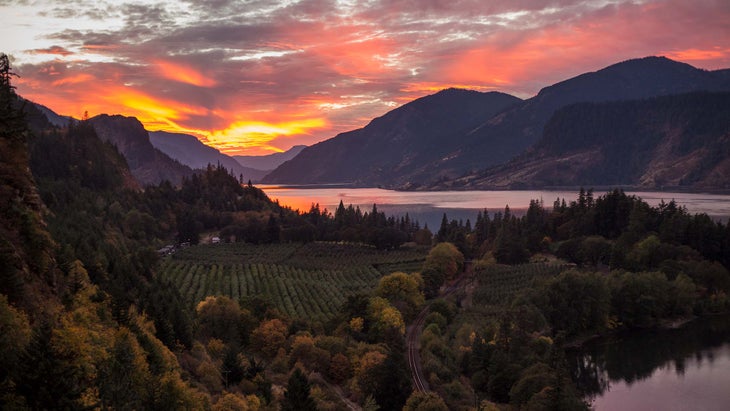[ad_1]
“], “filter”: { “nextExceptions”: “img, blockquote, div”, “nextContainsExceptions”: “img, blockquote”} }”>
Get full entry to Outdoors Study, our on-line training hub that includes in-depth health, vitamin, and journey programs and greater than 2,000 educational movies whenever you join Outdoors+>”,”name”:”in-content-cta”,”type”:”link”}}”>Sign up for Outside+ today.
Historically, organizing for conservation has appeared one thing like this: Get a bunch of like-minded pals and create a non-profit; appoint a board, apply for tax-exempt standing, decide some worthy tasks, fundraise, perhaps rally volunteers and go assist construct a path or plant timber. Fairly commonplace stuff—however like plenty of different issues in fashionable life, supporters of the blockchain need to change how we do it.
A brand new wave of decentralized autonomous organizations (DAOs), that are reliant on blockchain, are popping up throughout the globe with the identical mission in thoughts: give the ability again to the folks by permitting members to collectively make conservation selections, and utilizing sensible contracts to execute on them. And the conservation area might be the subsequent goal for social change.
For those who’re not conversant in the idea, a DAO is mainly a leaderless group of people that have organized so as to pursue a typical aim; some high-profile ones have executed all the pieces from accumulating uncommon NFTs (“non-fungible tokens,” or digital collectibles) to trying to buy a copy of the U.S. Constitution. This group is then represented by a group of guidelines which can be coded into a sensible contract that executes when sure circumstances are met, largely chopping out the necessity for a government. All the factor is dependent upon a blockchain—primarily, a high-tech, decentralized digital ledger, although the full explanation gets complicated.
Since conservation points are heterogenous, creating a number of conservation DAOs may supply a extra tailor-made strategy to saving the planet. Discovering options to deforestation within the Amazon might require a special technique than the safety of wetlands, for instance. And DAOs may give do-gooders a brand new strategy to set up within the title of a particular conservation effort.

Whereas blockchain-based conservation remains to be in its infancy, teams like those constructed round Open Forest Protocol, WildEarth, Moonjelly, and KilmaDAO already supply a window into how decentralizing conservation may change it and doubtlessly make it simpler to do at scale. Every conservation DAO depends by itself distinctive algorithm to influence change. The Open Forest Mission, for instance, was developed to create an inclusive platform the place members can report knowledge about forest restoration and tree planting, and the group can use that knowledge to attach challenge managers to funding. Moonjelly, an ocean-focused DAO named after a jellyfish that some scientists imagine may be capable of reverse the getting old course of, plans to boost cash to fund science-based marine conservation tasks by the tip of 2022. KilmaDAO, alternatively, is trying to purchase up carbon credit so as to drive up the price of polluting, in hopes of accelerating the transition to a inexperienced economic system. As of March 31, 17,261,875 tons of carbon have been absorbed by KilmaDAO.
Different tasks are utilizing NFTs to boost funds for conservation extra instantly. WildEarth, a for-profit enterprise that runs a 24/7 wildlife-focused broadcast, was initially established in 2007 with the acknowledged aim of creating nature extra accessible with out growing human influence. Its new assortment of NFTs instantly contributes to the conservation of the animal habitats that they function. 40% of WildEarth NFT earnings return to the custodians of the animals’ habitats, which the corporate hopes will assist present an incentive for them to guard native wildlife.
Critics of utilizing blockchain and web3 level to their environmental impacts as a priority for supporting this conservation medium. A big portion of DAOs depend on Ethereum, a “proof-of-work” community that’s grow to be infamous for the large-scale computing energy and vitality utilization it requires. Kyle McDonald, an artist and environmental activist specializing in NFTs, estimated in a February interview with Backpacker that every transaction on Ethereum is liable for about 17 kilograms of carbon dioxide, roughly the equal of a 41-mile journey in a typical gas-powered automobile. Whereas Ethereum is engaged on shifting to a lower-energy proof-of-stake mannequin that its backers say may minimize emissions by as much as 99%, some critics cost that it’s hypocritical for conservationists to make the most of a carbon-heavy know-how within the title of the planet. That backlash compelled the World Wildlife Fund to cancel a deliberate NFT fundraising challenge.
In response, some DAOs and NFT-backing conservation organizations are utilizing extra environmentally-friendly options. The Open Forest Protocol, for instance, is being constructed on NEAR Protocol, a carbon-neutral, proof-of-stake, layer-1 blockchain (that means, mainly, it stands by itself moderately than piggybacking on one other blockchain’s infrastructure). WildEarth depends on Polygon, one other proof-of-stake blockchain which can also be comparatively low-emission, although its reliance on Ethereum implies that it does produce greater than different, extra sustainable blockchains. How effectively they’ll deal with these public issues about air pollution—like those that sunk the World Wildlife Fund’s planned NFT fundraising project back in February—might effectively decide whether or not they could make a distinction sooner or later.
[ad_2]
Source link

Be the first to comment